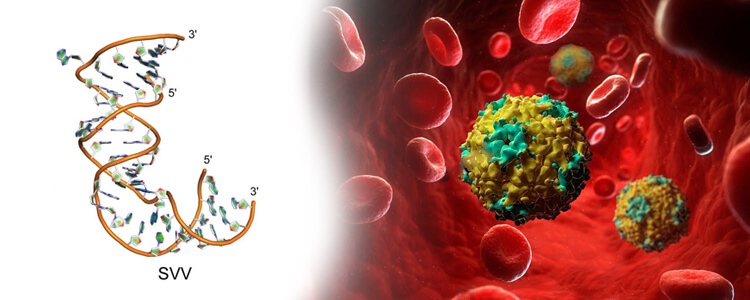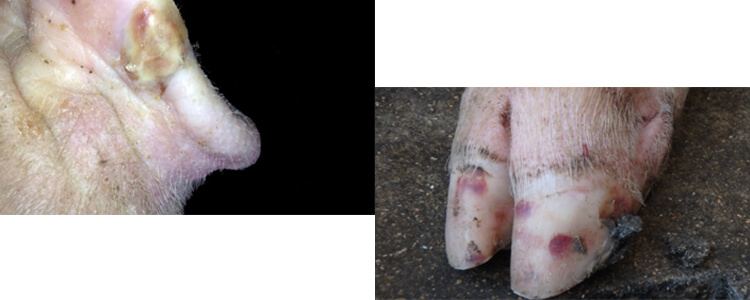|
2. Can Seneca virus cause serious harm?
In pigs infected with Seneca virus, the main symptoms are hoof crown, nasolabial lens and oral mucosa growing ulcers and blisters, with hoof shells fall off, difficulty standing, elevated body temperature, listlessness, anorexia, etc. Research on mortality is not enough. In the outbreak of Fujian, China in 201, some fatteners and sows with more than 150 kg showed the above symptoms. After 10 days, the blisters were scarred, and neither piglets nor weaners were ill. There is no death in the affected pigs. Another epidemic occurred in Fujian Province in the same year, both large and small pigs were ill. In the case of virus regression experiments, large pigs did not develop, but suckling piglets developed and died. Tests have shown that both the nose and the intramuscular route can cause blisters and death in the suckling pigs. After testing, the oral and nasal secretions, urine, and blood of the affected pigs contain viruses.
The clinical symptoms caused by Seneca virus are difficult to distinguish from other vesicular diseases, especially the symptoms of foot-and-mouth disease. At present, the World Health Organization has not included the Seneca virus in the new edition of the “Manual of Diagnostic Tests and Vaccines for Terrestrial Animals” and this virus has not been classified in China. There is no commercial vaccine for this virus in the world, so as a farmer, we have to actively prevent this disease.
|









